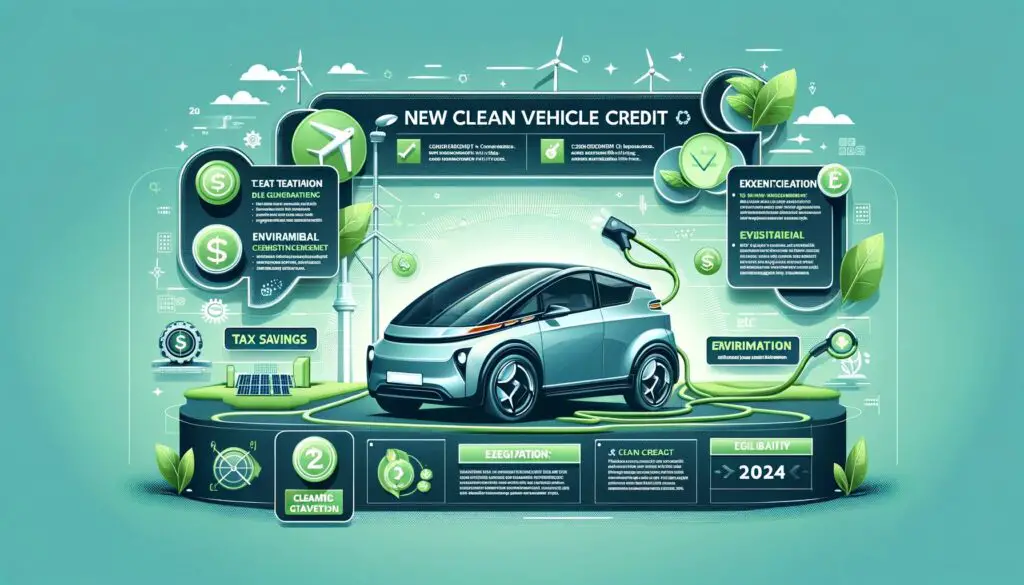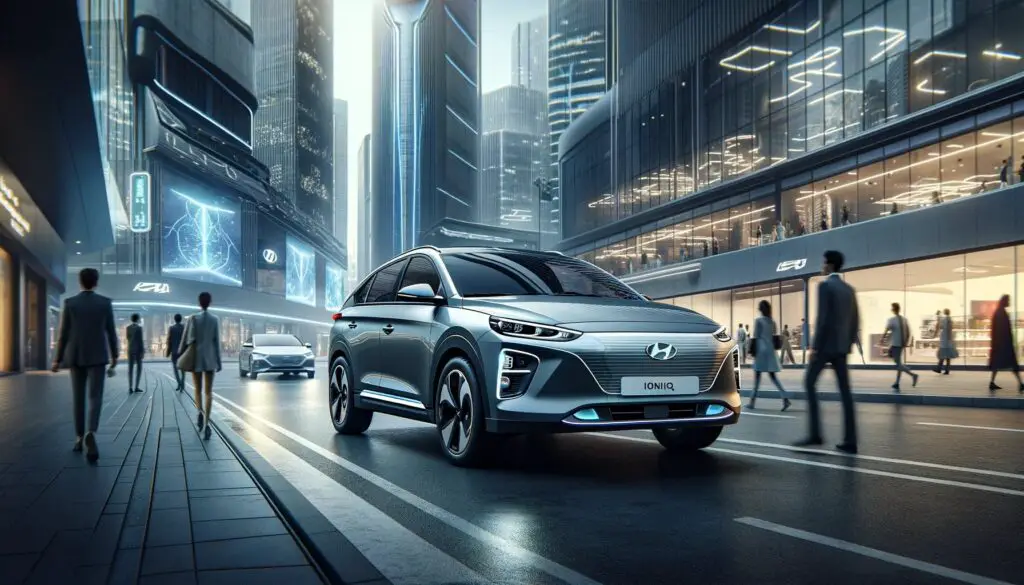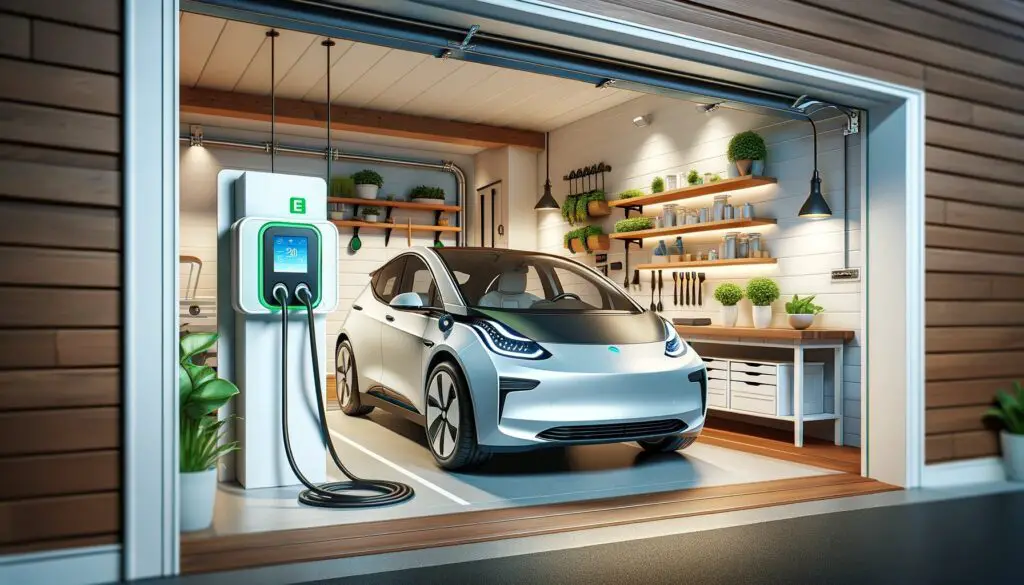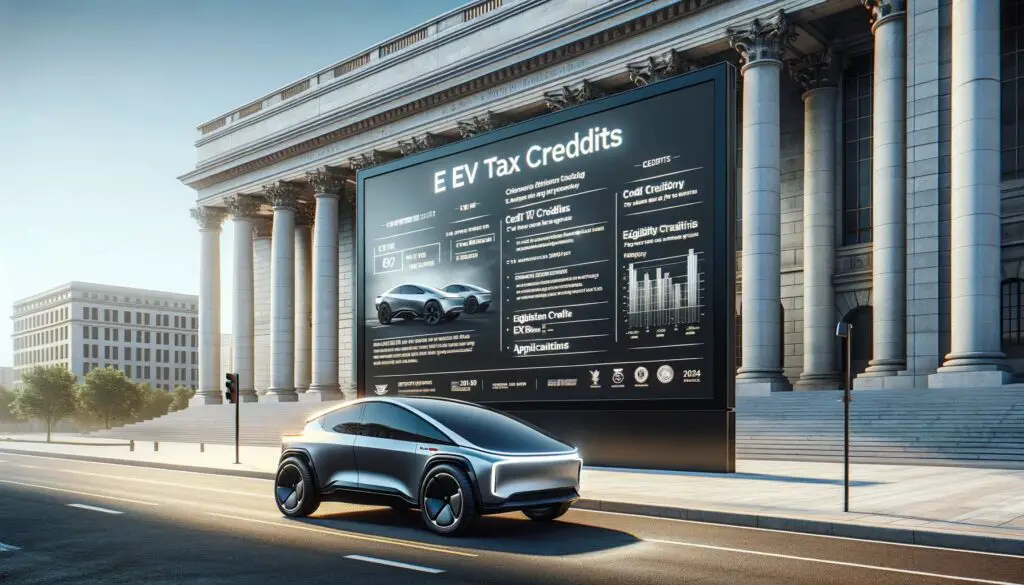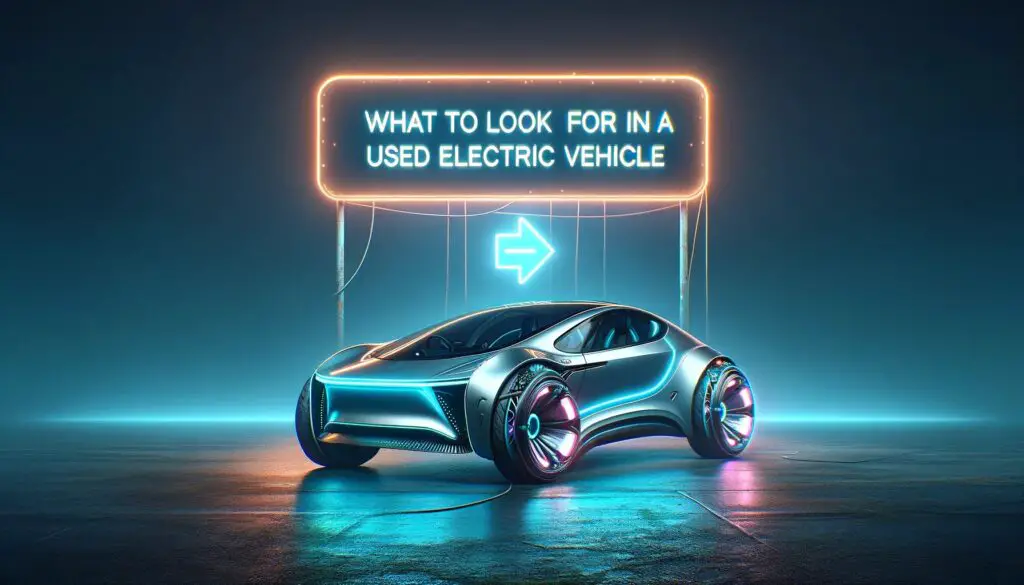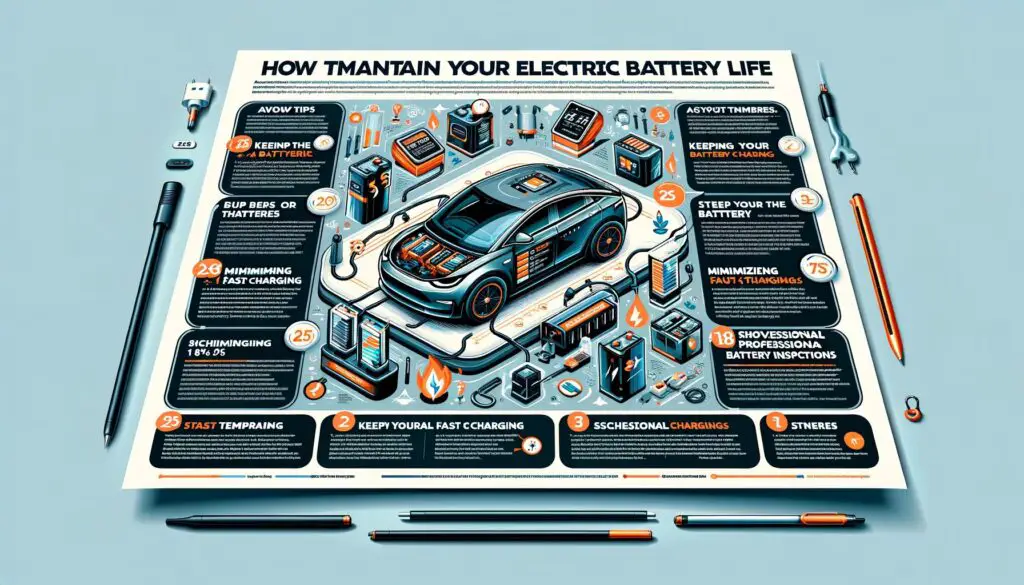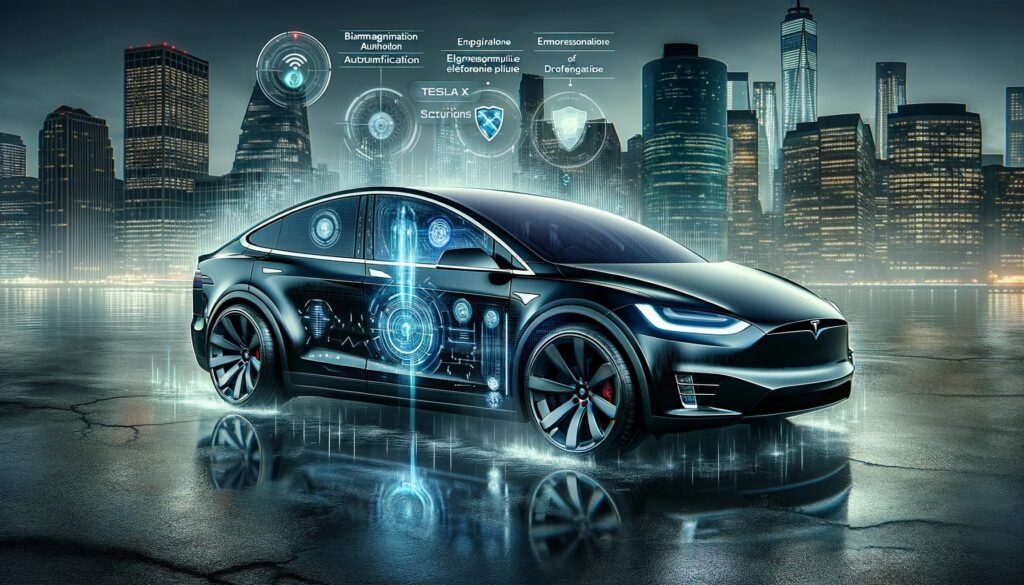In the realm of environmentally conscious initiatives, the Clean Vehicle Credit stands out as a beacon of incentivizing sustainable transportation choices. As of March 1, 2024, the landscape has shifted with the implementation of the Inflation Reduction Act of 2022, introducing pivotal changes to the Clean Vehicle Credit. This comprehensive guide aims to illuminate the nuances of this evolving credit, empowering individuals and entities alike to leverage its benefits effectively.
Understanding the New Clean Vehicle Credit
Purpose of the Clean Vehicle Credit
The Clean Vehicle Credit serves as a pivotal instrument in promoting the adoption of eco-friendly transportation alternatives, aligning with global efforts to combat climate change and reduce carbon emissions. Let’s delve deeper into the primary objectives and underlying principles of this incentive:
Environmental Sustainability
At its core, the Clean Vehicle Credit is designed to mitigate the adverse environmental impacts associated with traditional combustion engine vehicles. By incentivizing the adoption of electric vehicles (EVs) and fuel cell vehicles (FCVs), policymakers aim to curb greenhouse gas emissions and alleviate air pollution, thereby safeguarding public health and preserving natural ecosystems.
Economic Incentives
In addition to its environmental benefits, the Clean Vehicle Credit offers tangible economic incentives for individuals transitioning to clean transportation technologies. By providing financial rebates and tax credits, governments incentivize consumer behavior conducive to sustainable mobility solutions, thereby stimulating market demand for electric and fuel cell vehicles.
Technological Innovation
Furthermore, the Clean Vehicle Credit catalyzes technological innovation within the automotive industry, driving advancements in electric vehicle technology, battery storage, and hydrogen fuel cell technology. This fosters a competitive landscape wherein manufacturers strive to develop cutting-edge solutions that enhance vehicle performance, range, and affordability, thereby accelerating the transition towards a sustainable transportation ecosystem.
Evolution of Tax Credits for EVs
The evolution of tax credits for electric vehicles (EVs) underscores a dynamic interplay between technological advancements, regulatory frameworks, and societal priorities. Let’s explore the transformative journey of EV tax credits in greater detail:
Early Incentives
In the nascent stages of electric vehicle adoption, governments introduced modest incentives to spur initial market penetration. These incentives typically encompassed tax deductions or credits for purchasing electric vehicles, albeit with limited scope and eligibility criteria.
Substantial Rebates
As electric vehicle technology matured and gained traction among consumers, policymakers escalated their commitment to promoting clean transportation alternatives. This culminated in the introduction of substantial rebates and tax credits aimed at offsetting the upfront costs associated with electric vehicle purchases, thereby enhancing affordability and accessibility.
Legislative Support
The evolution of EV tax credits is intricately intertwined with shifting legislative landscapes and governmental priorities. Legislative initiatives, such as the Inflation Reduction Act of 2022, reflect a proactive stance towards incentivizing sustainable mobility solutions and reducing reliance on fossil fuels.
Consumer Adoption
Ultimately, the efficacy of EV tax credits hinges on consumer adoption and market uptake of electric vehicles. By aligning financial incentives with consumer preferences and purchasing behavior, governments seek to accelerate the transition towards a greener, more sustainable transportation ecosystem, thereby realizing overarching environmental and economic objectives.
In summary, the evolution of tax credits for electric vehicles mirrors a broader societal shift towards sustainable mobility solutions, driven by technological innovation, regulatory support, and consumer demand. As governments continue to refine and expand their incentive programs, electric vehicles are poised to play an increasingly prominent role in shaping the future of transportation.
Key Features of the 2024 Clean Vehicle Credit
The 2024 iteration of the Clean Vehicle Credit introduces several key features aimed at enhancing accessibility, clarity, and effectiveness. Let’s delve into the core components of this updated incentive program:
Maximum Credit Details
The cornerstone of the 2024 Clean Vehicle Credit lies in its revised maximum credit details, providing individuals with a clear understanding of the financial benefits available. By delineating the maximum credit amount applicable to eligible taxpayers, policymakers aim to instill confidence and transparency in the incentive program, thereby incentivizing greater adoption of clean vehicles.
Eligibility Criteria for Individuals
Navigating the eligibility criteria is paramount for individuals seeking to leverage the Clean Vehicle Credit effectively. Key considerations include:
- Income Thresholds: Eligibility for the credit is contingent upon meeting specified income thresholds, ensuring equitable distribution of financial incentives across diverse socioeconomic backgrounds.
- Vehicle Usage Requirements: Prospective claimants must adhere to vehicle usage requirements outlined by regulatory authorities, such as minimum mileage thresholds or designated usage patterns.
- Qualifying Models: The significance of limited qualifying models cannot be overstated, as eligibility may be contingent upon selecting vehicles that meet specified criteria, such as battery capacity, range, and performance benchmarks.
Understanding these criteria is essential for individuals to optimize their eligibility and maximize financial incentives, thereby fostering greater adoption of clean vehicles and accelerating the transition towards sustainable mobility solutions.
Eligibility Explained
Delving deeper into eligibility criteria reveals nuanced distinctions between battery electric vehicles (BEVs) and fuel cell vehicles (FCVs). Factors such as:
- Battery Capacity: BEVs with higher battery capacities may qualify for enhanced incentives, reflecting advancements in energy storage technology and driving range.
- Critical Mineral Sourcing: Ensuring responsible sourcing of critical minerals used in vehicle battery production underscores the broader sustainability objectives of the Clean Vehicle Credit, incentivizing manufacturers to adhere to ethical and environmental standards.
Comprehensive understanding of these eligibility parameters is indispensable for accurate assessment and informed decision-making, enabling individuals to select vehicles that align with their needs, preferences, and financial circumstances.
In summary, the 2024 Clean Vehicle Credit represents a pivotal advancement in incentivizing the adoption of clean transportation alternatives, characterized by enhanced clarity, accessibility, and effectiveness. By empowering individuals with comprehensive knowledge of eligibility criteria and maximum credit details, policymakers aim to catalyze widespread adoption of clean vehicles, thereby mitigating environmental impact and promoting sustainable mobility solutions for future generations.
Impact of the New Credit on Consumers
The introduction of the New Clean Vehicle Credit in 2024 heralds significant implications for consumers, encompassing both financial benefits and potential challenges. Let’s delve into the impact of this credit on eligible buyers:
Financial Benefits for Eligible Buyers
For eligible buyers, the New Clean Vehicle Credit represents a substantial opportunity to realize tangible financial savings. By offsetting a portion of the initial investment associated with purchasing clean vehicles, the credit effectively reduces the total cost of ownership, thereby enhancing affordability and incentivizing eco-conscious consumer behavior.
Tangible Savings:
- Reduced Upfront Costs: The credit serves to mitigate the financial barrier often associated with clean vehicle acquisition, making electric and fuel cell vehicles more accessible to a broader spectrum of consumers.
- Lower Total Cost of Ownership: By defraying a portion of the initial investment, the credit contributes to long-term cost savings, encompassing reduced fuel and maintenance expenses associated with clean vehicles.
Incentivized Behavior:
- Promotion of Eco-Conscious Choices: The financial incentives provided by the Clean Vehicle Credit incentivize consumers to opt for environmentally friendly transportation alternatives, thereby reducing carbon emissions and mitigating environmental impact.
Potential Challenges and Limitations
Despite its myriad benefits, the New Clean Vehicle Credit may present certain challenges and limitations for consumers to navigate:
Geographic Restrictions:
- Manufacturing Constraints: Geographic restrictions on manufacturing may limit the availability of eligible vehicles in certain regions, necessitating careful consideration of vehicle sourcing and distribution channels.
Limited Qualifying Models:
- Variability in Availability: The eligibility criteria for the Clean Vehicle Credit may limit the selection of qualifying models available to consumers, potentially constraining choice and necessitating trade-offs in vehicle features and specifications.
Regulatory Compliance:
- Adherence to Eligibility Criteria: Consumers must ensure compliance with stringent eligibility criteria outlined by regulatory authorities, including income thresholds, vehicle specifications, and usage requirements, to qualify for the credit.
In navigating these challenges and limitations, consumers are advised to conduct thorough research, consult with automotive professionals, and evaluate their individual circumstances to make informed decisions regarding clean vehicle purchases. By leveraging the financial benefits of the Clean Vehicle Credit while proactively addressing potential challenges, consumers can play a pivotal role in advancing sustainable mobility solutions and shaping a greener, more sustainable future.
For Dealers and Manufacturers
The introduction of the New Clean Vehicle Credit in 2024 precipitates significant implications for both dealerships and manufacturers, necessitating proactive adaptation and strategic initiatives to capitalize on emerging opportunities and address evolving consumer demands:
How the New Credit Affects Dealerships
The advent of the New Clean Vehicle Credit heralds a paradigm shift for dealerships, necessitating adaptation to evolving consumer preferences and regulatory frameworks. Key considerations include:
Proactive Adaptation:
- Consumer Education Initiatives: Dealerships must prioritize customer education initiatives to raise awareness about the availability and benefits of the Clean Vehicle Credit, thereby incentivizing consumer interest and facilitating informed purchasing decisions.
- Inventory Management: Proactive inventory management practices are essential for aligning dealership offerings with consumer preferences and eligibility criteria for the Clean Vehicle Credit, optimizing vehicle selection and availability to maximize market competitiveness.
Regulatory Compliance:
- Adherence to Compliance Standards: Dealerships must ensure compliance with regulatory standards and eligibility criteria outlined by regulatory authorities, facilitating seamless transaction processing and mitigating the risk of non-compliance penalties.
Manufacturer Adjustments
Manufacturers are poised to enact strategic adjustments to meet evolving consumer demands and regulatory requirements, leveraging technological innovations and supply chain optimization to capitalize on the burgeoning demand for clean vehicles. Key considerations include:
Technological Innovations:
- Product Development: Manufacturers must prioritize research and development initiatives to enhance the performance, affordability, and sustainability of clean vehicles, thereby meeting consumer expectations and regulatory standards while maximizing market appeal.
- Integration of Clean Technologies: Strategic integration of clean technologies, such as advanced battery storage systems and hydrogen fuel cell technology, enables manufacturers to differentiate their offerings and cater to diverse consumer preferences within the clean vehicle market.
Supply Chain Optimization:
- Ethical Sourcing Practices: Manufacturers must adopt ethical sourcing practices for critical minerals and raw materials used in clean vehicle production, ensuring compliance with environmental and labor standards while enhancing supply chain resilience and sustainability.
- Streamlined Production Processes: Proactive optimization of production processes and supply chain logistics enhances manufacturing efficiency, reduces costs, and accelerates time-to-market for clean vehicles, thereby capitalizing on market demand and maintaining competitive advantage.
In summary, proactive adaptation and strategic initiatives are imperative for dealerships and manufacturers to capitalize on the opportunities presented by the New Clean Vehicle Credit, fostering collaboration between stakeholders and driving the widespread adoption of clean vehicles for a sustainable future.
FAQs on the New Clean Vehicle Credit
As the New Clean Vehicle Credit comes into effect in 2024, prospective claimants may have questions regarding eligibility, eligible vehicles, income limitations, claiming processes, and changes introduced in the latest iteration. Let’s address some frequently asked questions to provide clarity and guidance:
Who Qualifies?
Eligibility for the New Clean Vehicle Credit is contingent upon meeting specified criteria, including:
- Income Thresholds: Prospective claimants must meet prescribed income thresholds to qualify for the credit, ensuring equitable distribution of financial incentives across diverse socioeconomic backgrounds.
- Vehicle Specifications: Eligible vehicles must meet specified criteria outlined by regulatory authorities, encompassing factors such as battery capacity, range, and performance benchmarks.
Consultation with tax professionals is recommended for personalized guidance tailored to individual circumstances, ensuring accurate assessment of eligibility and optimization of financial benefits.
Eligible Vehicles
As of March 2024, a diverse range of electric and fuel cell vehicles qualify for the Clean Vehicle Credit, encompassing various makes and models. Prospective claimants are advised to consult with authorized dealerships and reference official IRS guidance for accurate identification of eligible vehicles, thereby ensuring compliance with regulatory requirements and maximizing financial incentives.
Income Limitation
The imposition of income limitations underscores the equitable distribution of financial incentives under the Clean Vehicle Credit, ensuring accessibility for individuals across diverse socioeconomic backgrounds. Taxpayers should familiarize themselves with income thresholds to ascertain eligibility and optimize financial benefits, thereby leveraging the credit to its fullest potential.
Claiming for Used Vehicles
While the Clean Vehicle Credit primarily pertains to new vehicle purchases, certain exceptions may apply for used vehicles meeting specified criteria outlined by regulatory authorities. Prospective claimants are advised to consult with tax professionals for personalized guidance on navigating nuanced eligibility considerations associated with pre-owned vehicles, ensuring compliance with regulatory requirements and maximizing financial incentives.
Changes in 2024
The 2024 iteration of the Clean Vehicle Credit introduces substantive changes aimed at enhancing accessibility and efficacy. Key modifications include:
- Revised Maximum Credit Details: Clear delineation of maximum credit amounts provides clarity and transparency for eligible taxpayers, enhancing accessibility and facilitating informed decision-making.
- Eligibility Criteria Refinement: Refinement of eligibility criteria ensures alignment with evolving regulatory standards and consumer preferences, thereby optimizing the effectiveness of the credit in promoting clean vehicle adoption.
- Streamlined Claiming Processes: Introduction of streamlined claiming processes simplifies administrative procedures and expedites the realization of financial incentives for consumers, reflecting a commitment to continuous improvement and alignment with evolving societal needs.
In summary, the New Clean Vehicle Credit represents a pivotal advancement in incentivizing sustainable transportation choices, characterized by clarity, accessibility, and effectiveness. By addressing common questions and concerns, stakeholders can navigate the credit’s intricacies with confidence, maximizing financial benefits and contributing to a greener, more sustainable future.
Staying Updated on Changes and Updates
In the dynamic landscape of the Clean Vehicle Credit, staying informed about regulatory developments and industry trends is paramount. Let’s explore the importance of monitoring and available resources for accessing accurate information:
Importance of Monitoring
Vigilant monitoring of regulatory developments and industry trends is essential for staying abreast of changes to the Clean Vehicle Credit. By staying proactive, stakeholders can:
- Stay Informed: Regular monitoring enables stakeholders to stay informed about policy changes, eligibility criteria updates, and procedural enhancements, thereby minimizing the risk of non-compliance and optimizing financial benefits.
- Adapt Strategically: By anticipating changes and trends, stakeholders can adapt their strategies and operations to align with evolving requirements, ensuring continued effectiveness and relevance within the clean vehicle market.
Resources for Information
Access to reliable resources is instrumental in navigating the complexities of the Clean Vehicle Credit. Key resources include:
- Official IRS Guidance: The Internal Revenue Service (IRS) provides authoritative guidance on eligibility criteria, claiming procedures, and regulatory updates related to the Clean Vehicle Credit. Reference to official IRS publications facilitates accurate interpretation and implementation of tax regulations, promoting compliance and mitigating risk.
- Industry Associations: Industry associations, such as the Alliance for Automotive Innovation and the Electric Drive Transportation Association, serve as valuable sources of information and advocacy efforts related to clean vehicle technologies. Access to research reports, policy briefs, and stakeholder engagement opportunities enriches understanding and informs strategic decision-making within the automotive sector.
By leveraging these resources, stakeholders can make informed decisions and optimize their utilization of available incentives, thereby contributing to the widespread adoption of clean vehicles and the realization of broader sustainability objectives.
Case Studies and Examples
Real-life case studies offer valuable insights into the practical implications of claiming the Clean Vehicle Credit. By examining diverse scenarios and outcomes, individuals can gain actionable strategies and best practices for maximizing financial benefits and overcoming potential challenges:
Real-Life Scenarios
Exploring real-life case studies provides a nuanced understanding of the Clean Vehicle Credit’s impact on individuals and businesses. Examples include:
- Individual Consumers: A family considering purchasing an electric vehicle evaluates the financial implications of claiming the Clean Vehicle Credit. By assessing eligibility criteria, available incentives, and long-term cost savings, they make an informed decision aligned with their budget and environmental values.
- Fleet Operators: A commercial fleet operator explores the feasibility of transitioning to electric vehicles to capitalize on the Clean Vehicle Credit. Through comprehensive analysis of upfront costs, operational savings, and regulatory compliance considerations, they develop a strategic roadmap for fleet electrification, optimizing financial outcomes and environmental impact.
Consulting with Tax Professionals
Expert guidance from tax professionals is indispensable for navigating the intricacies of the Clean Vehicle Credit and optimizing financial outcomes. By leveraging their expertise and experience, individuals can receive personalized advice tailored to their unique circumstances:
- Personalized Assessment: Tax professionals conduct a thorough assessment of individual circumstances, including income levels, vehicle specifications, and eligibility criteria, to determine the optimal claiming strategy for maximizing financial incentives.
- Compliance Assurance: Tax professionals ensure compliance with regulatory requirements and provide guidance on documentation, claiming processes, and potential audit risks, mitigating the risk of non-compliance penalties and ensuring peace of mind for claimants.
- Strategic Planning: Tax professionals offer strategic insights and planning recommendations to optimize financial outcomes and minimize tax liabilities. By exploring alternative claiming options, tax credits, and incentive stacking opportunities, they empower individuals to make informed decisions aligned with their financial goals and sustainability objectives.
Conclusion
In conclusion, the New Clean Vehicle Credit represents a pivotal milestone in incentivizing sustainable transportation choices and reducing environmental impact. By navigating the intricacies of eligibility criteria, claiming processes, and industry dynamics, stakeholders can unlock substantial financial benefits and contribute to a greener, more sustainable future.
Appendix
Glossary of Terms
- BEV: Battery Electric Vehicle
- FCV: Fuel Cell Vehicle
- IRS: Internal Revenue Service

